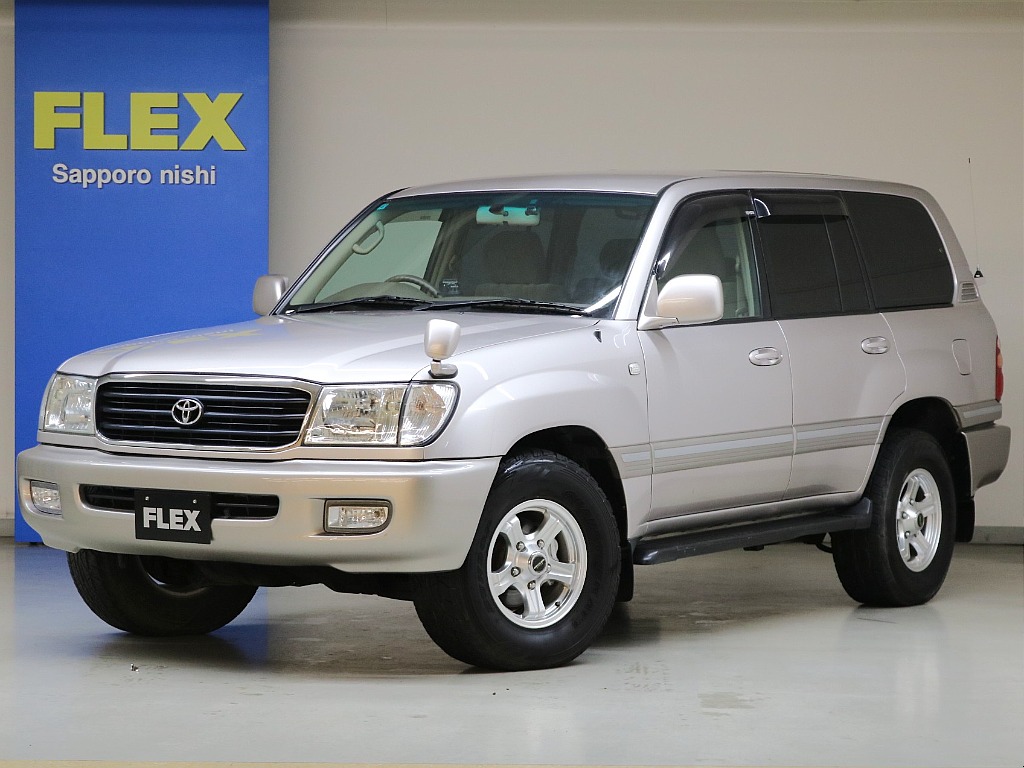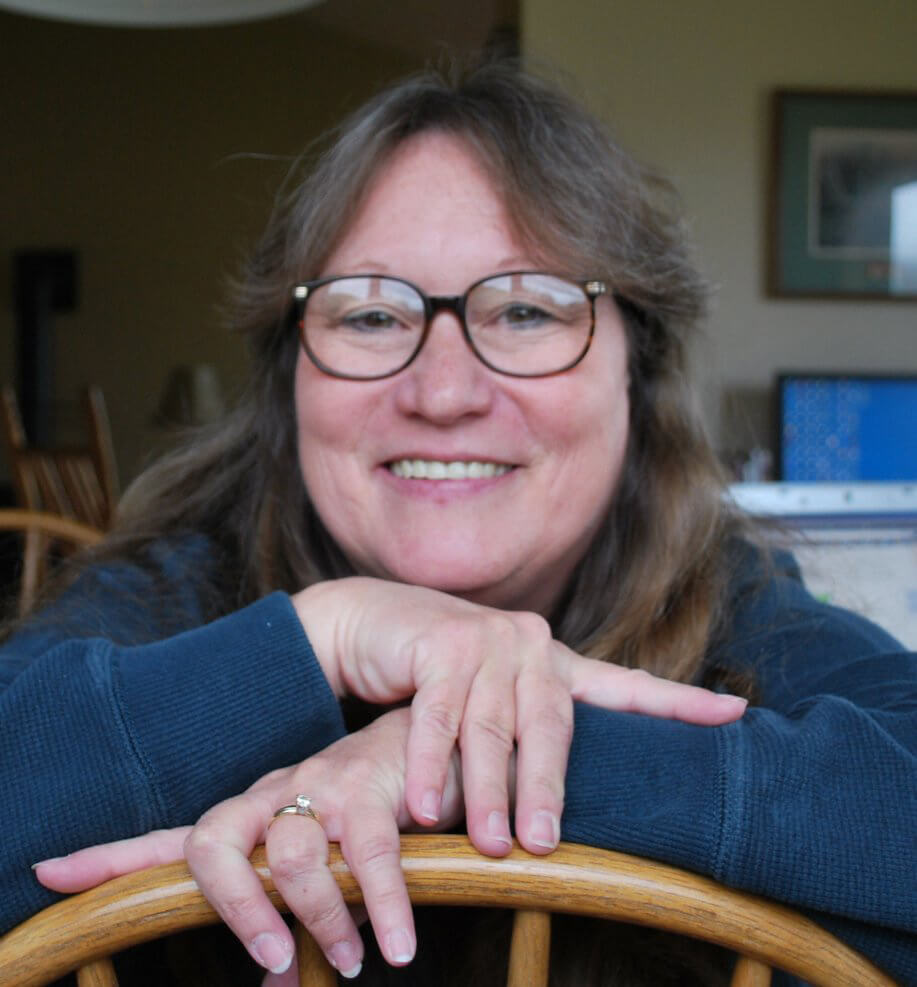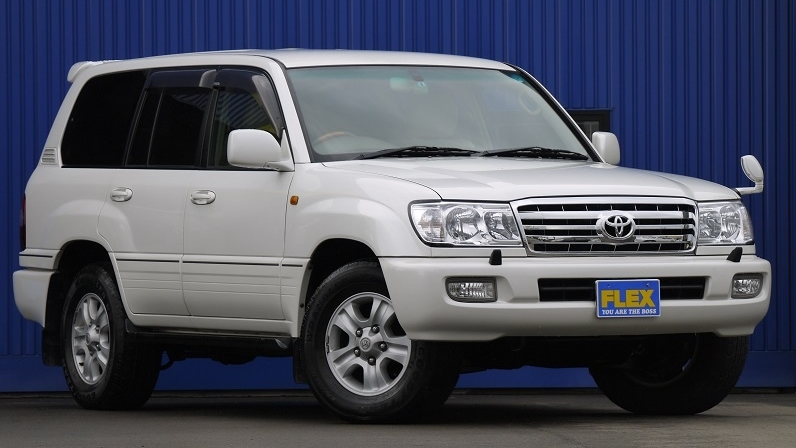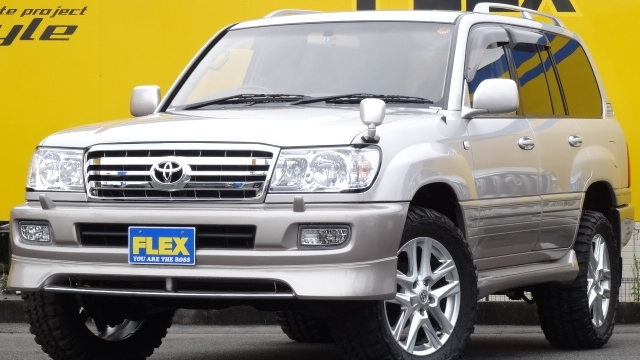The Toyota Land Cruiser 100 Series was introduced in 1998 for the 1999 model year that replaced the 8-year-old 80 Series. It continued until 2007 when it was phased out by the 200 Series. It was unveiled at the 32nd Tokyo Motor Show as the “Grand Cruiser”.
The 105 is also considered part of the 100 Series, but it is built using the 80 Series chassis and powertrain that included front and rear coil solid axles and a straight-6 gas or diesel engine. The 105 was better off-road than the 100, but the 105 did not make it to the North American market while the 100 did.
The 100 had a wider chassis and independent front suspension, which made it more popular with the American audience. Its smoother ride and roomier interior made it perfect for the wide-open roads of the United States, and its off-road abilities made it a must for the adventure-seeking car owner, which appealed to the American audience. The 100 was only offered with a gas-powered V8 in the U.S. market.
The 100 Series helped to draw interest around the world to the Land Cruiser as a brand, which helped to drive sales numbers up.
Are Land Cruisers 100 Series built in Japan?
The Toyota Land Cruiser 100 Series was built and assembled in Japan between 1998 and 2007 in Toyota’s Yoshiwara plant (now known as Toyota Auto Body) before it was replaced by the LC 200.
It is the replacement Land Cruiser for the 80 Series and was manufactured with two different models: the 100 and the 105; although they are both considered the 100 Series. The 105 was built using the previous LC 80 chassis and powertrain for a stiffer ride due to its solid axles, and the 100 was built for a smoother ride using an independent front suspension. The 105 models were only available in Australia, Africa, and South America while the 100 was available worldwide.
Is the Land Cruiser 100 Series popular in Japan?
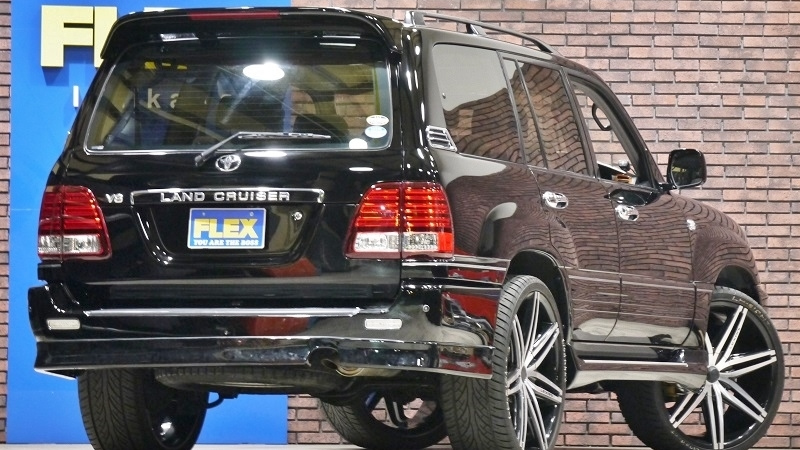
When the Land Cruiser 100 Series was originally released in 1998, it was well-received by 4WD enthusiasts in Japan. It had robust off-road capabilities along with a spacious interior. Due to changes in driving habits, economics, and other factors, the LC 100 and other large SUVs lost favor during the LC 100’s run while smaller and more fuel-efficient vehicles were more favorable to the circumstances.
While the LC 100 was not as popular with Japanese drivers as other Toyota models, it was popular worldwide because it was a 4WD with class and comfort that could be driven off-road without any problems.
The Land Cruiser 100 still has many devoted fans of off-roading who appreciate its reliability and durability, as well as its towing and hauling capacities.
If you are interested in reading more about the dawn of LC 100’s global market, click here.
Is the Land Cruiser 100 Series sold in Japan?
Since the Land Cruiser 100 Series has been out of production since 2007, the only LC 100s sold on the Japanese market are the used models. Because it is a durable and reliable vehicle, there are many older model Land Cruisers in use.
At FLEX Automotive, we use the LC 100 as a base model for Renoca 106 that combines the new 100 with the retro styling of the 60 Series.
What year is a 100 Series Land Cruiser?

The Toyota Land Cruiser 100 Series was produced every year from the 1999 model to the 2007 model. Auto Trader reports that the best year Land Cruiser 100 Series is between the 2006 and the 2007 models, thanks in part to the VVT system used to improve performance and fuel efficiency.
- 1999 – 2001 models featured a 4-speed automatic transmission paired with either a 4.7-liter V8 gas engine or a 4.2-liter inline-6 diesel turbo with three trim levels for each engine configuration.
- 2002-2005 models have a 5-speed automatic transmission along with minor changes in design.
- 2006-2007 models got a facelift that included the headlights.
For more information on the early to late model changes can be found here.
You can also check out more information on the trim levels in this article, and the features of the LC 100 here.
Is Land Cruiser 100 Series reliable?
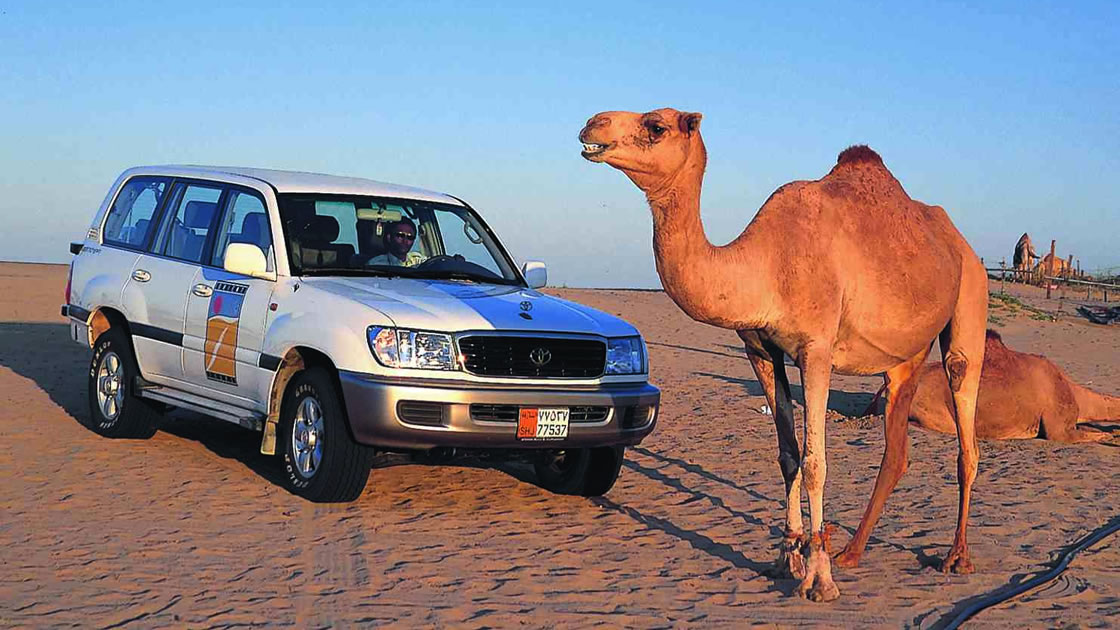
Since the Land Cruiser 100 Series comes from a long line of 4WD vehicles with a military background, it is safe to say that the LC 100 is as reliable as any of the other models in the Land Cruiser’s long history. The Land Cruiser name has sold more than 10 million units globally and each generation is roughly nine years in length.
It has been tried and tested on the most extreme terrain available: Australia. The Australian outback has the toughest temperatures and terrain, and the Land Cruiser was built to tackle it. Toyota spent a lot of time and effort in testing and driving under those conditions before they released the first Land Cruiser in 1951. Since then, Toyota returns to test in Australia as needed, and the Aussies have an affinity for the Land Cruiser because of its reliability.
According to Auto Trader, the 2006 and 2007 years seem to be the most popular due to the VVT system since it is considered quite durable.
Yes, the Land Cruiser 100 Series is extremely reliable as long as you take care of it and regularly maintain it. It is not just a car to drive around town; it is a lifestyle that will take you to the wild side.
You can find more information about the overall Land Cruiser 100 series specs in this article.
How much does a 100 Series Land Cruiser cost?

The price of the average used Land Cruiser 100 Series is in the $22,000 range, but you may be able to find some on the low end of $7,000 to the most extremely modified models at prices over $60,000.
The original MSRP for the Land Cruiser 100 Series price was over $46,000 in 1999.
What are the differences between the Land Cruiser 100 and the LX470?
Toyota’s Land Cruiser 100 and Lexus’ LX470 share a platform, but there are a few differences between the two vehicles. First, Toyota is not considered to be the luxury brand of the two even though the Land Cruiser 100 is a much more luxurious model than the previous 80 Series or the 105 for that matter, and secondly, the LX470 is less available due to smaller production runs.
Here are some of the other differences:
Exterior features
The exteriors are different with the LX470 having a more upscale appearance that includes chrome accents and a prominent front grille with quad headlights.
Interior
The LX470 offers a more upscale interior with extra amenities such as a premium audio system, leather seats, and a rear-seat entertainment system. They are also equipped with leather, a six-disc CD changer, and other comfort conveniences like a rear-seat entertainment system.
In contrast, the Land Cruiser 100 Series has a more practical interior, featuring either cloth or leather seats depending on the trim level.
Trim
The Land Cruiser 100 Series came in various trim levels across different markets, whereas the LX470 was offered in a single fully-equipped trim level. This article provides a detailed explanation of the trim levels of the Land Cruiser 100.
Engine
The Lexus was only available with the 4.7-liter 2UZ-FE V8 (UZJ100) whereas the LC 100 was offered with that and the 4.5-liter 1FZ-FE inline-6, and three diesel options for the LC 100 were available depending upon the country’s laws and regulations.
Both vehicles are capable of off-road travel and are built with the same reliability that you expect from a Toyota product.
Suspension system
The LX470 boasts a more sophisticated suspension system with adjustable height control, whereas the Land Cruiser 100 Series has a standard suspension system with limited height adjustment capabilities.
Price
The Lexus was more expensive than the LC 100.


